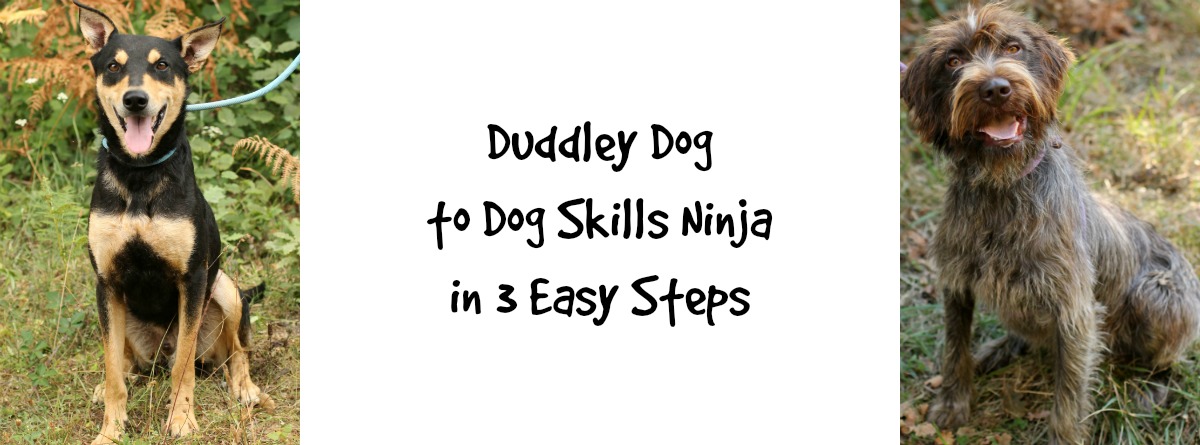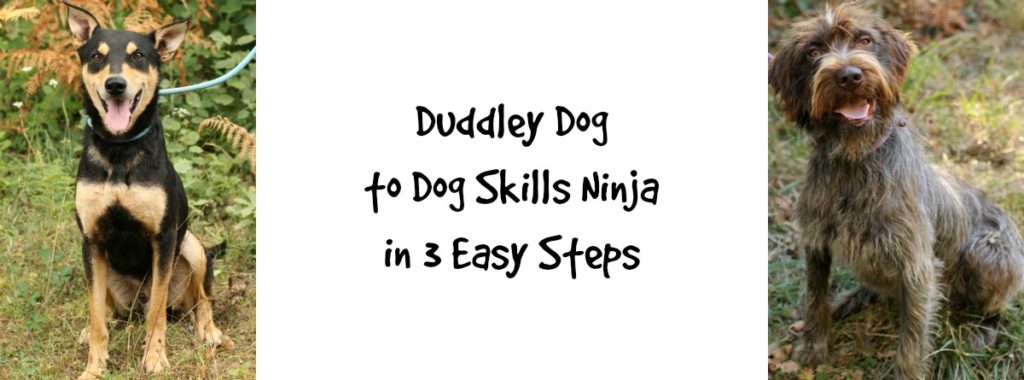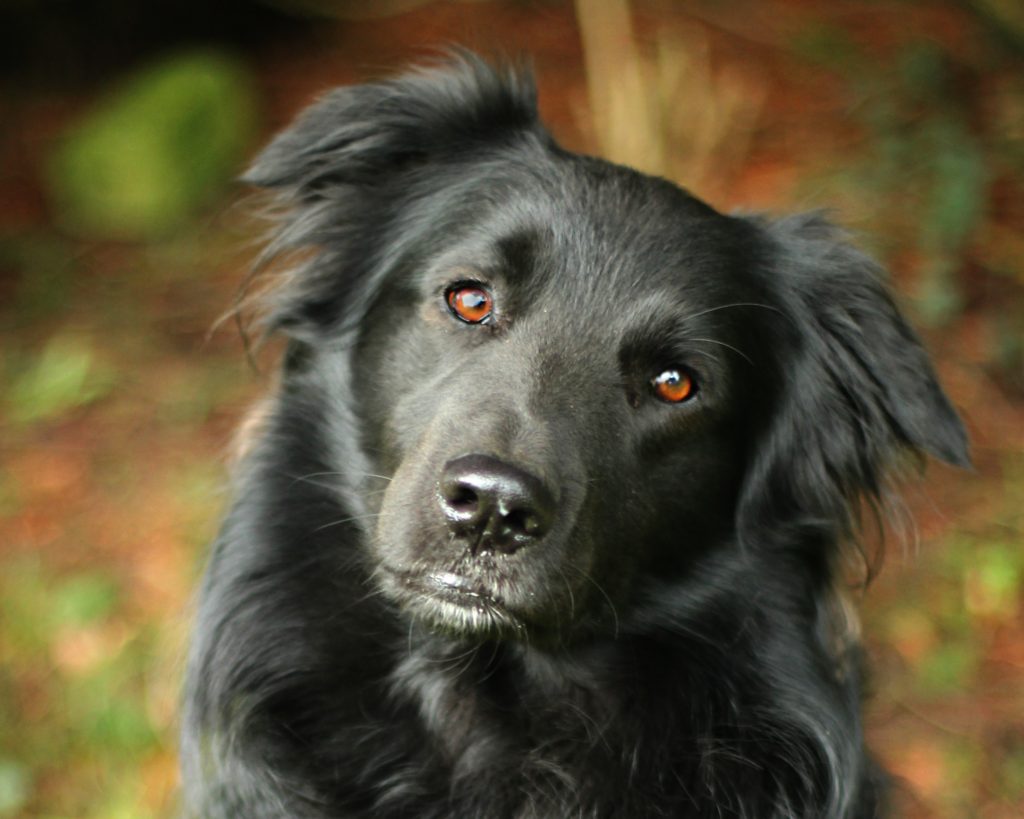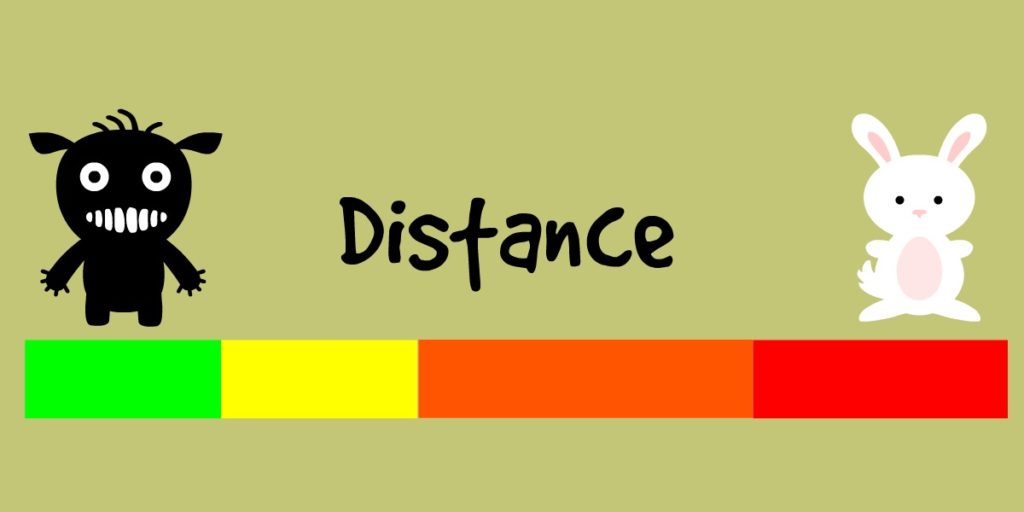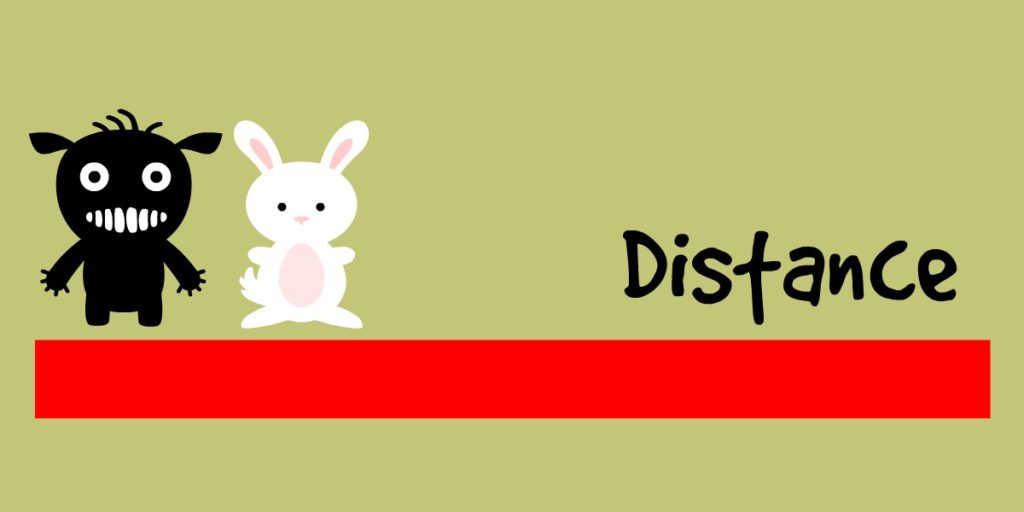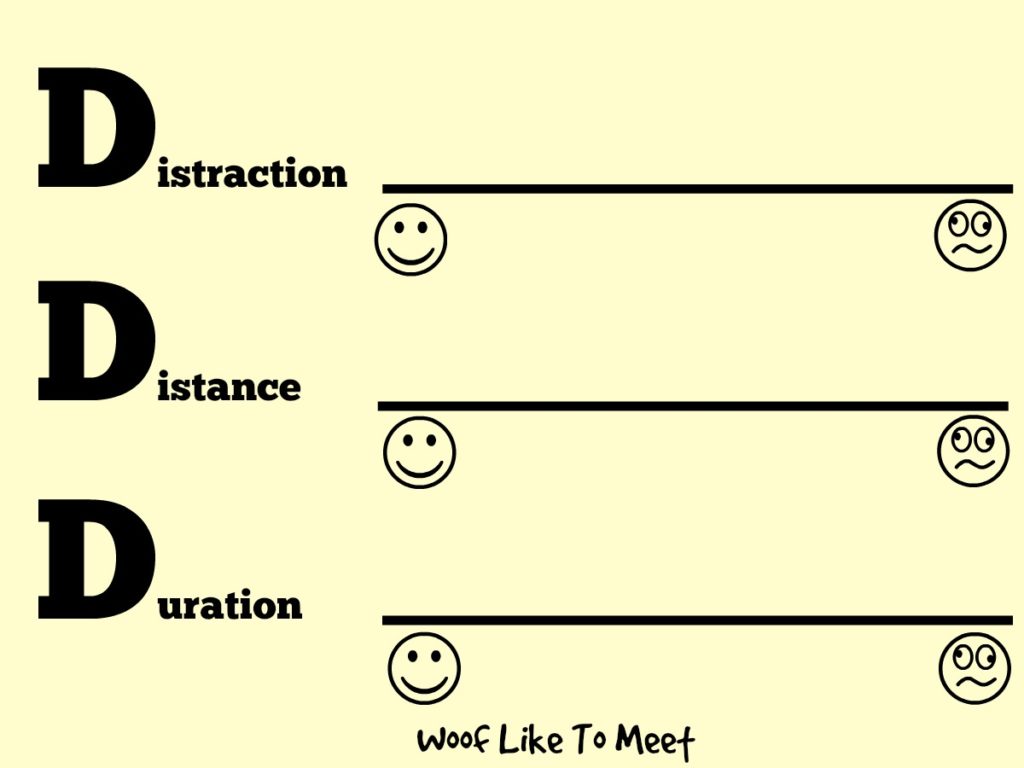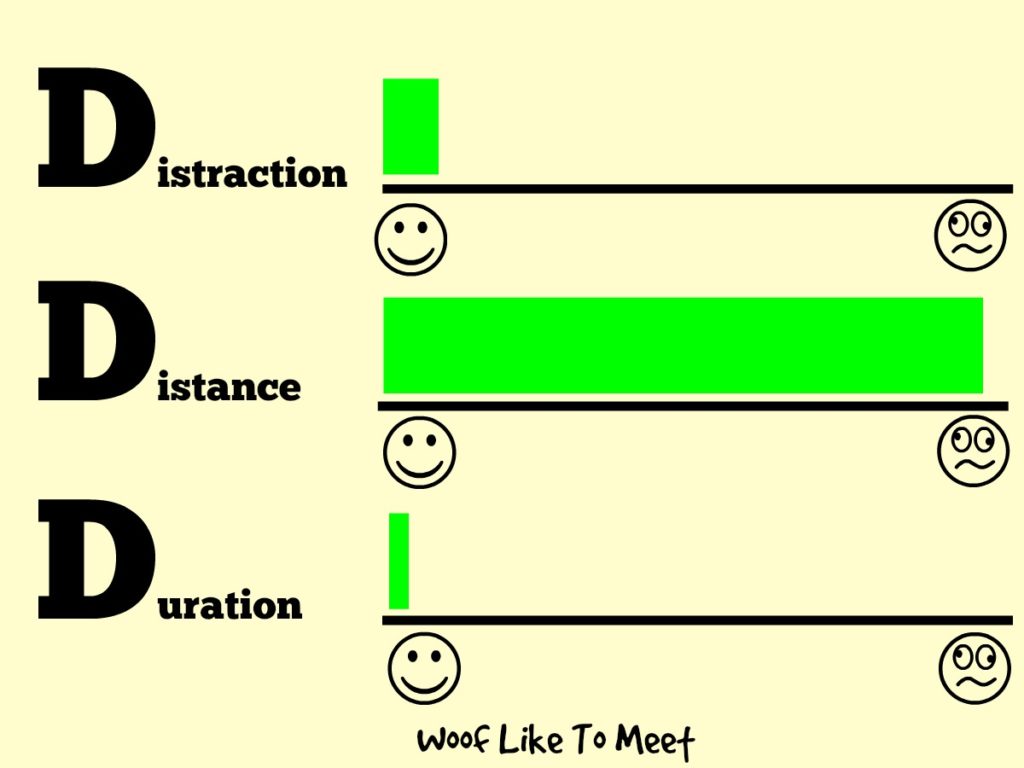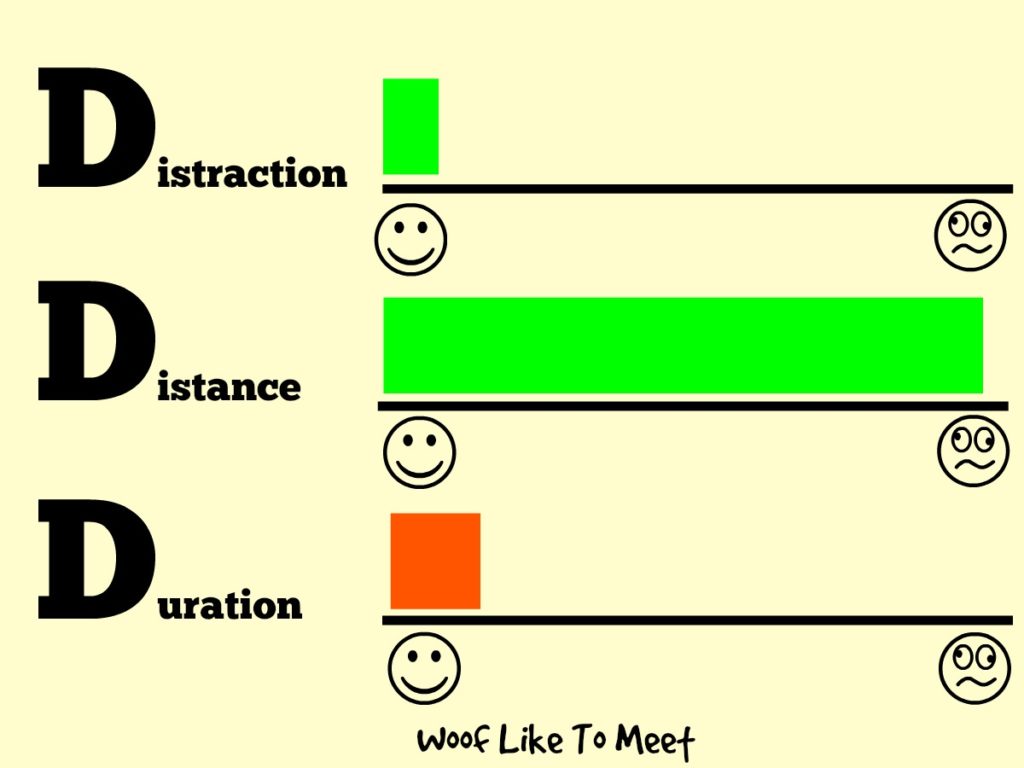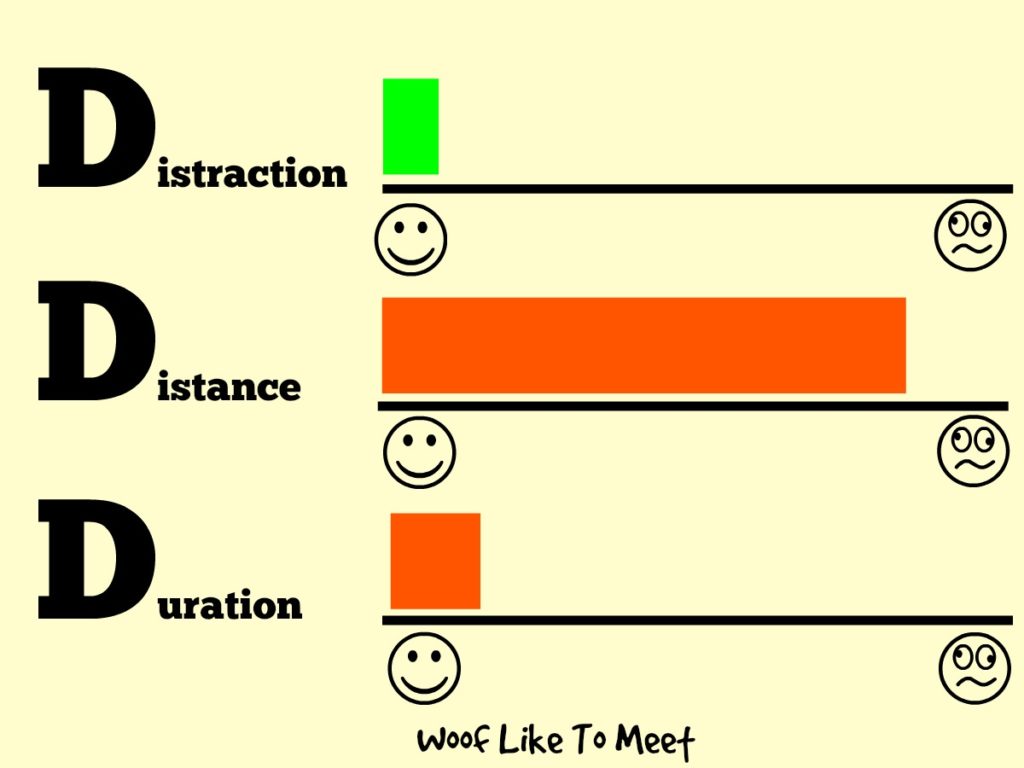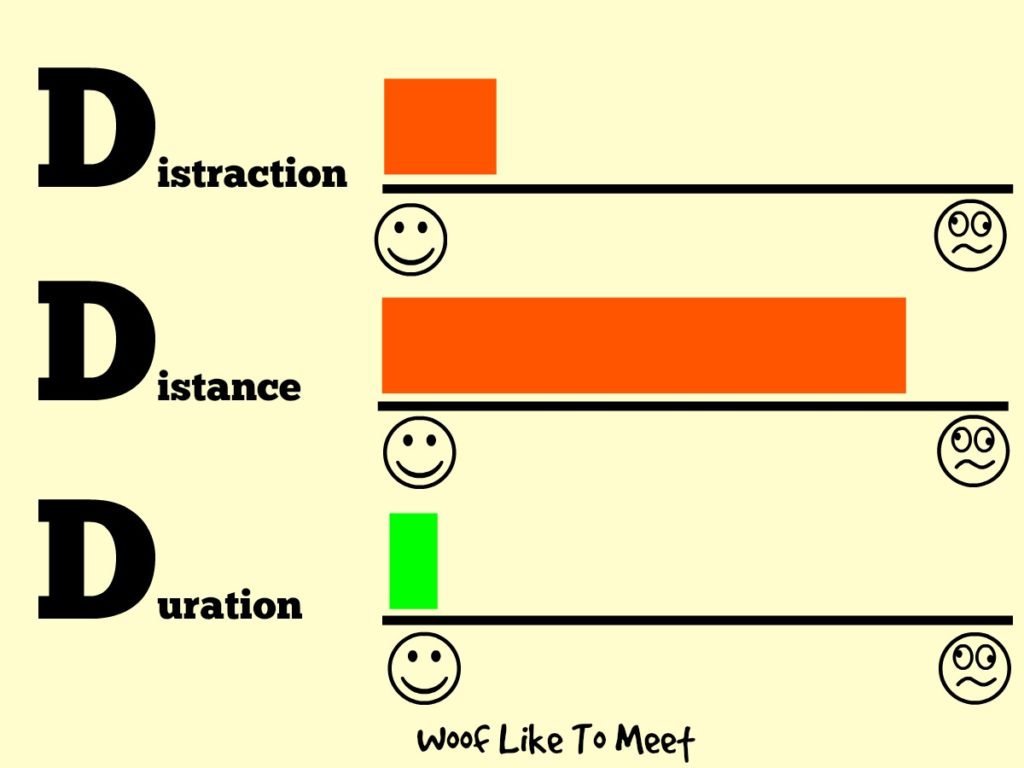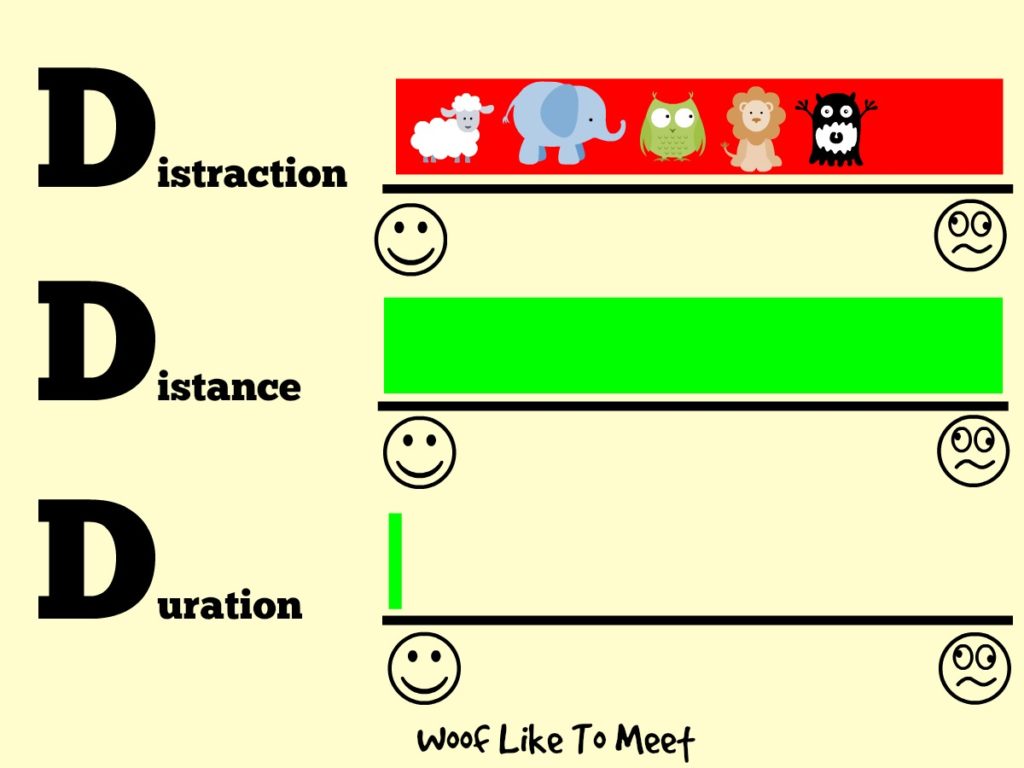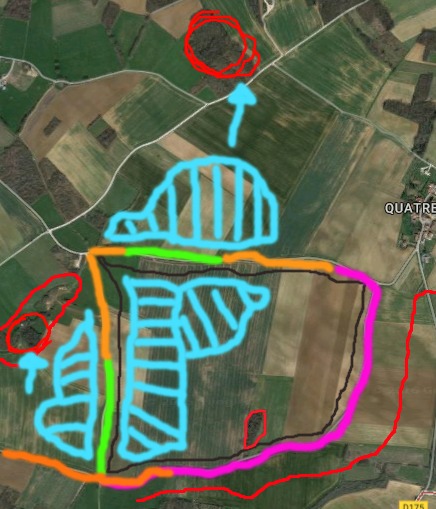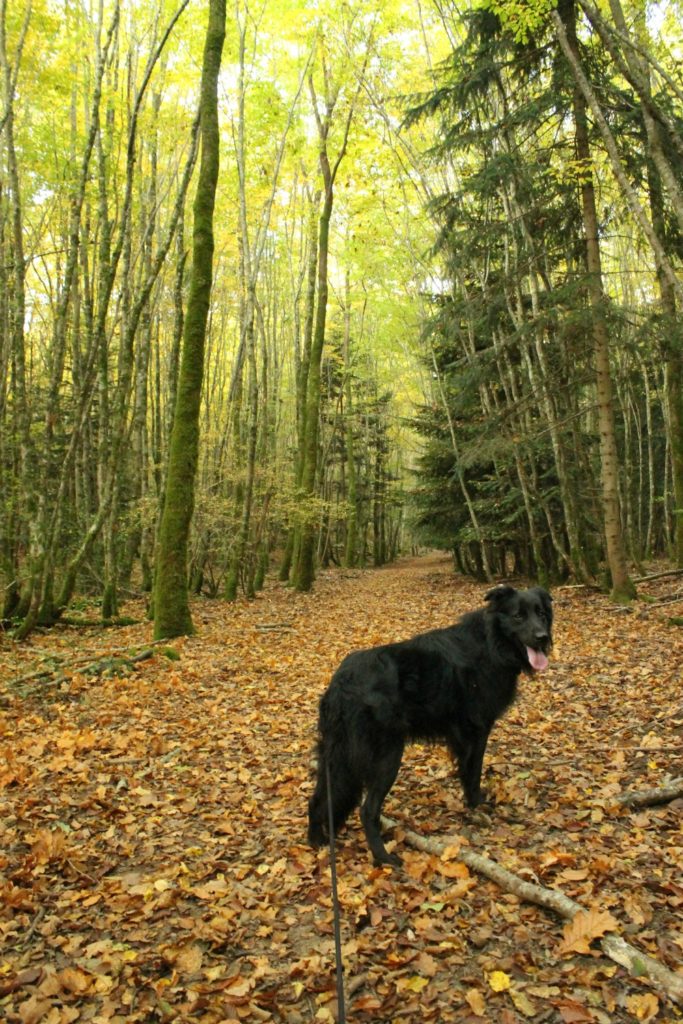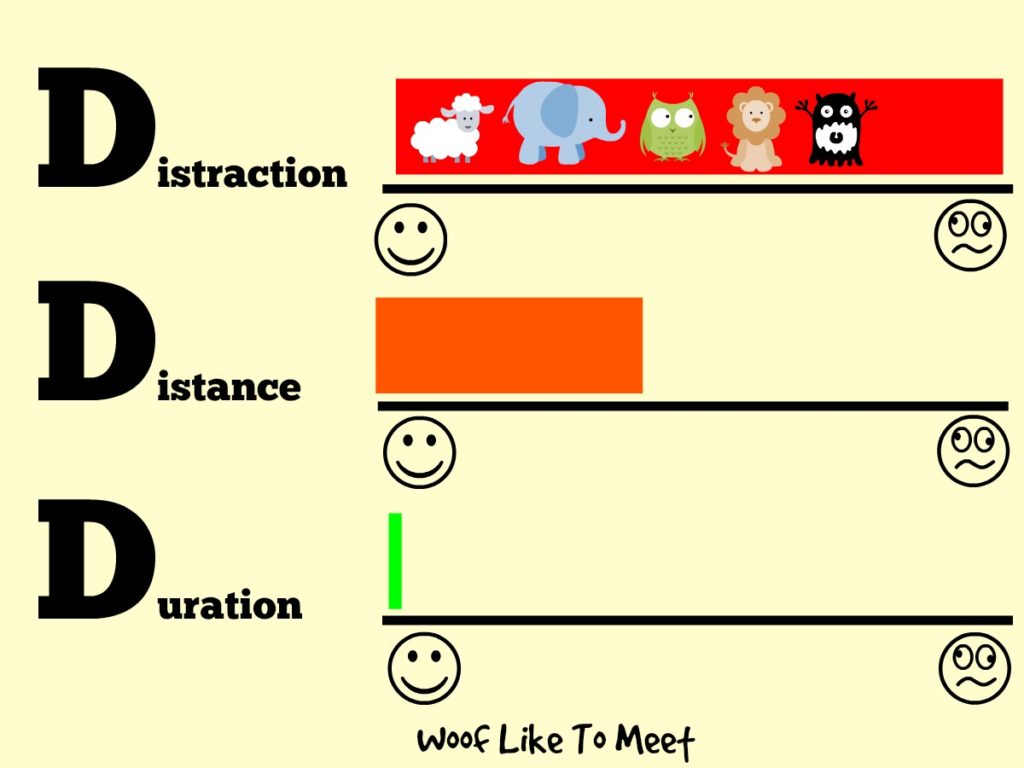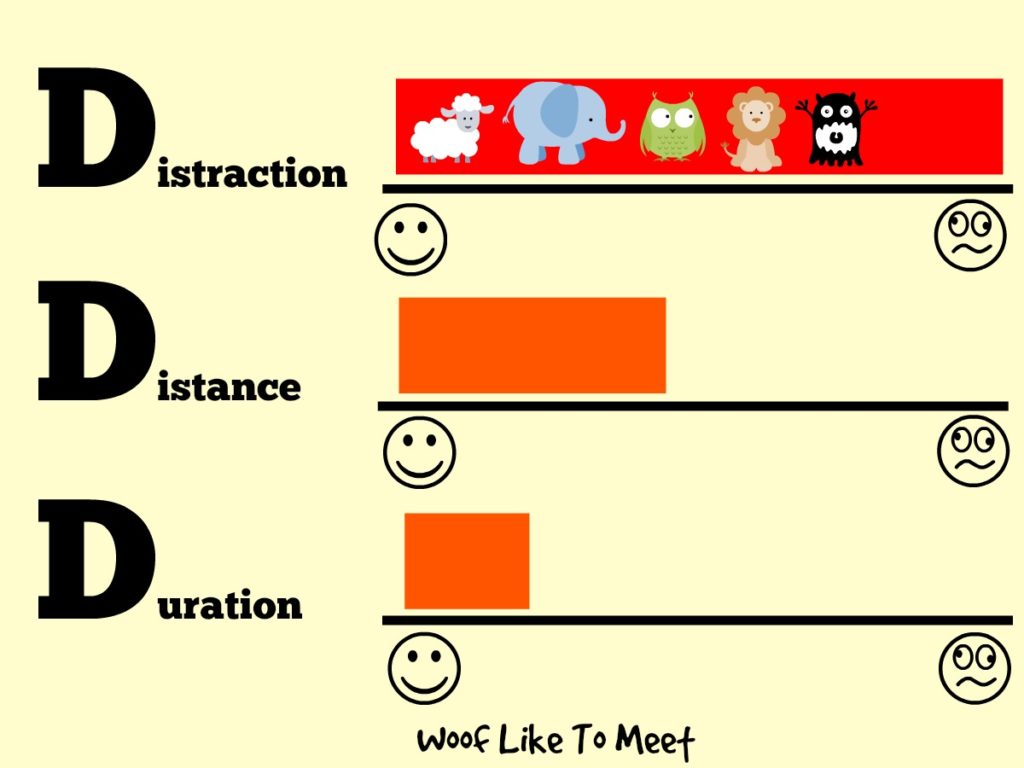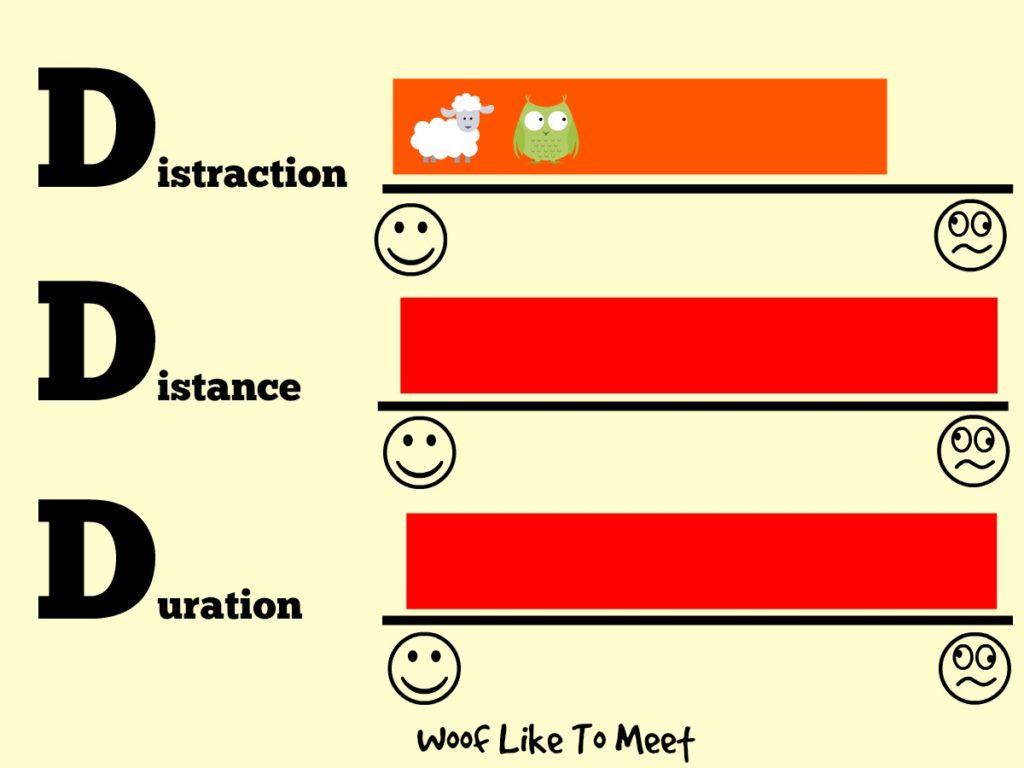There are times when you may find your dog completely and utterly untrainable. Why is it that his sit in the house is perfect and his recall in certain place is amazing, but then he’s off like a shot in others? Why is it that you can walk past one house on your walk and you’ll find your dog absolutely and utterly going nuts at the dog behind the fence? Often, the moments when our dogs are Duddley Dogs and not Dog Ninjas is the time we seek out help from trainers. It’s also the number one reason I get a call back after adoption.
One of the questions I ask most often when problem behaviours occur is how reliable is your dog’s ‘Look at me’?, or how reliable is their ‘come’? Can they do a ‘sit’?
“Oh yes,” say the owners. “Maniac is very good at sitting.” I can sense in their voice they are wondering what this has to do with Maniac’s running feud with the neighbour’s dog.
Sure enough, Maniac’s “come” is perfect… if he’s following you into the kitchen. On a walk, well, “Oh he’s never been so good at recall out of the house,” say the owners.
The truth is that dogs don’t generalise well. They don’t understand that the behaviour you’re asking them to do in one place is the same behaviour you want them to do outside. Example: I was trying to teach Heston to play bow on cue. He’d already started bowing every time I got the dustpan and brush out in the house, so I knew they 100% predicted a play bow. I took him out into the workshop to try there. 0%
Not the same at all, is it?
So when it comes to problem behaviours, if your dog has never, ever been asked to look at you outside, if they’ve never been asked to do a sit on a walk, or if their recall is atrocious, then you may find your dog looking at you all…
When it comes to training or replacing habits with new ones, there are 3 Ds that you have to take into consideration. This includes teaching behaviours like ‘Maniac, come here!’ and training replacement behaviours, like walking nicely on a lead around cows rather than dancing on hind legs barking at them. With the 3Ds, you can turn your Duddley to a Ninja much more easily.
Distraction
As I tried to get Heston walking on a loose lead yesterday in the forest, the 1st D reminded me just how hard it can be. Distraction simply means all of those things that make it more difficult to get your dog’s attention. That can be things you can see, such as bikes, joggers, other dogs, cats, deer, toys and cars. It can also be things you can’t see, but your dog can hear or smell. For Heston, the sound of jays drives him mad. He can tolerate virtually every sound distraction but that. Don’t forget that whilst there are things you both might hear or see, your dog will be able to smell things that you just can’t. So when Amigo went after a deer that could have been no more than 10 metres into the forest from the path, I had no idea it was there, but he certainly did.
Distraction means that you are fighting for your dog’s attention. It means every single thing that you are fighting against. If your dog is a Duddley sometimes, this is mostly why. And this is also where we need them to be a Ninja.
Distance
There are two distances you should be aware of. The first is the distance that you are from your dog. Simply put, the closer you are to your dog, the more likely they are to respond to training. That’s why your dog may do a perfect sit right up close to you and struggle when you are two metres away. Mind you, sometimes that’s just a lack of ability to generalise and a firmly implanted habit. Your dog has always sat within 50cm of you and therefore he won’t think that you might ask him to sit when you are a metre from him.
The second distance you should be aware of is the distance between you and the distractions. Simply put, if you’re up-close and personal with a distraction, you may not have a cat in hell’s chance to get the dog’s attention back on you. Thus, if Heston is ten metres from another dog, the chances of him performing a requested behaviour is almost zero. When we’re two hundred metres away, it’s a good start.
So if I’m walking my dog or working with my dog and he’s right near me, the further he gets from me and the nearer he gets to a distraction (like a lovely bunny rabbit), the harder it will be to teach him new behaviours or to expect him to offer behaviours that are rock solid. If the rabbit is 200m away and Heston is 2m from me, he’ll do pretty much everything I ask of him. Likewise with Hagrid at the shelter. If we’re 10m from another dog, he’ll do everything I ask.
But if the distraction is right there in my space up close, the task is suddenly impossible. For Hagrid, if a dog is within 4m, I could be waving a leg of lamb and he wouldn’t care less. For Tricki Woo dancing on his lead when he sees a cow, nothing is pulling him back from that. And for Heston, if there are swallows dive-bombing us, what I’m asking him to do will be impossible.
Duration
The longer I ask my dog to give a behaviour, the harder it is. Not all behaviours have a duration. Holding a sit, keeping eye contact, staying in a down position, keeping in a stay position… all get harder the longer I need a dog to hold them.
Put all three together and you’ve got three Ds that make learning either very easy or very hard. They are also things that we can manipulate to get the best out of our dog and to make sure that learning is rock solid under all circumstances.
You can see them here on this simple diagram.
Step 1: Easy Peasy Lemon Squeezy
Here, I’m starting to teach a behaviour (and yes, I’ve just realised the smiley face and the Duddley face are the wrong way round for Distance, but hey ho)
There are few distractions. There is a long and large distance between me/the dog and any potential distractions (I’m taking it as read that you are close to the dog at all points for the 3Ds and that you might start putting distance between you and the dog at another point). And I ask for a very brief behaviour. Here, the learning is most likely to succeed. No distractions. Plenty of distance. Short duration.
So… can I get Tricki Woo to stop dancing when he sees a cow and to walk calmly when he sees them? It’s easiest when there are no other distractions (so a quiet road or space with no other dogs, passers-by or crazy cyclists) and when there is a big distance between us and the cows, and when I don’t ask him to walk calmly when looking in the direction of the cows for very long before stopping and rewarding him.
Can I get Maniac to stop barking and lungeing at other dogs? Again, easy when it’s a calm environment with few other distractions, when there is a huge distance between us and the other dogs, and when I expect him to walk calmly for just a short burst. I might even then walk away completely. Those first times, I have no intention of changing the bars on this chart. He has achieved the learning goal for the session so I’m not going to add more challenge.
Step 2: Increasing the challenge
For this, I’m going to expect a little longer duration for the behaviour. If I’m teaching my dog to heel around people, I’ll ask them to do it a little longer. Not much longer. I don’t want to do it until they fail. I want to stop whilst they are succeeding and reward them for their learning. I’ll keep the distance the same and the low level of distraction the same. So if I want Loobi Loo to stop and stand when a cyclist goes by, I’m going to ask him to do that for a little bit longer than he was doing before, and I’m going to stop before he fails.
Once I’ve upped the duration a little, I’m going to bring them a little nearer to the distractiony things. Thus, if teaching Tilly to walk to heel when we pass cow pats and not scamper off to feast on such delights, I’m going to keep doing a heel and start just that bit closer than before.
When Heston was barking at cyclists out of the car window, I asked him to look at them from a distance. The looks got longer and I got closer. Like before, quit whilst you’re winning.
When I want to add in distractions again, I’m going to take away some of the other challenge and go back to a shorter duration (or even a safer distance). Thus, rabbits might be a distraction for Amigo, but rabbits and pheasants is going to require a bit less of him in terms of duration. I might even up the distance again.
Some days the universe does not cooperate and gives me a world with a lot of distractions. This can even happen in the garden if there are vans going past or stopping, or the post lady, or there are dogs barking or tractors. In the forest, it is full of unseen distractions and asking for a behaviour is tough. For instance, if I want to improve Heston’s recall, I’m going to put a big space between us and those distractions. That might be 400 metres or more.
This is how I use the three Ds for recall.
First, I know where the distractions are (red). These are areas where I will get recall only when Heston has completely exhausted his sniffing. Therefore, he is on the lead when I get too close to those distractions. Distance is my friend.
You can see there are parts of the walk that are green, because his recall is 100% here. There are parts that are orange, where I will get a fab recall about nine times out of ten.
Then there are pink bits where I might as well have gone home.
The red bit on the left is either uninhabited most of the time, or the deer graze on the other side, or the smell is weakest. Thus, even though it is only 300m away from the path, it is less distracting.
The red bit at the top of the diagram is heavily distracting (and of course, is filled with hunters and their dogs at the moment) and there are plenty of deer in that small bit. So although it’s 500m away, if the smells are strong, Heston is off.
Off the map on the right is a heavily wooded area with boar, deer, roe deer and plenty of other things. Thus, there is no way he goes off lead here because it is too close and too distracting. Although he could happily (if he wanted) run off into this forest from his ‘green’ bits (it’s only a kilometre across the field to the forest off to the right of the map) he never does. Thus, on a good day, as long as the wooded areas are more than 300m away, his recall is NINJA level!
That means I need to set 300m as his default ‘distance’ and work on his recall with maybe a less distracting environment at 250m, then take it back out and trial it at 300m in a more distracting environment. At the same time, I have to say “Wow, you’re doing great, Dog Ninja… a 450m recall is AMAZING!”
PS… here, his recall is zero metres.
Why? A gamillion gazillion distractions all far, far too near. He’ll come back when he’s good and ready if he’s off lead here. There might as well be lions, elephants and ogres here.
I also have to think of the task I’m asking him to do. Recall is TOUGH NINJA stuff. Doing a sit on a lead and a down… well even Duddley here can manage that despite the distractions.
Step 3: Moving to Mastery
So in a distracting environment, I’m going to keep duration short and my expectations low. I’m going to manage distance carefully and know that 500m is safe but 450m is not.
I can then ask for longer behaviours. This doesn’t need to be Heston’s recall over a 500m testing ground. It can be Hagrid and his 4m comfort zone for giving eye contact instead of lunging and air-snapping at a passing dog. I’m only going to ask him to do it for a short while at first as we have more and more dogs about invading his space, but we’ll step up the length gradually and I’ll be happy to have eye contact for a couple of seconds as those dogs get nearer. I still don’t want any fail moments though. Time for us to put distance between us before he fails. It’s also true of Tricki Woo and his field of cows. I’ll ask for that 4-paws/non-dance loose lead walk for a longer duration before turning around and saving the next step for another day.
Just before we get to Ninja Dog Skills, I’ll ask for a longer duration and a very close distance to fewer or less challenging distractions. For Dances-at-Cows, that will be to be up-close-and-personal doing a loose-lead walk with all four feet on the floor… and I’ll make it a less challenging distraction – a non-moving cow facing away from us minding its own business.
Finally, when my dog is ready, we’re ready to master Ninja Dog Skills Level: Expert. He can handle multiple distractions at a close distance and for a longer period of time.
If you just have the 3Ds in the back of your head when you are asking your dog to do stuff, you’ll be able to help make their learning much more effective. Be aware though that if you’re constantly asking your dog to do difficult stuff over a long period of time in a highly-distracting environment in close proximity to those distractions, they are likely to fail even if they never have before.
Notch back on one of the Ds and you’ll find your dog much more able to cope. So for Toby today finding it very hard to sit and NOT be fixated on a cat sitting on the table whilst his owner ate his lunch, distance made things much more manageable. I’m pretty sure he could cope with that usually, but then he was also surrounded by a lot of very distracting stimuli.
So when we talk about challenge for our dogs, we need to think in these terms, and then we will find that our dogs are much more able to make great progress in their learning. Next time your dog has selective deafness, ask yourself how next time you can keep within safe limits and you’ll find your distracted, reactive dog is biddable, willing and keen.

